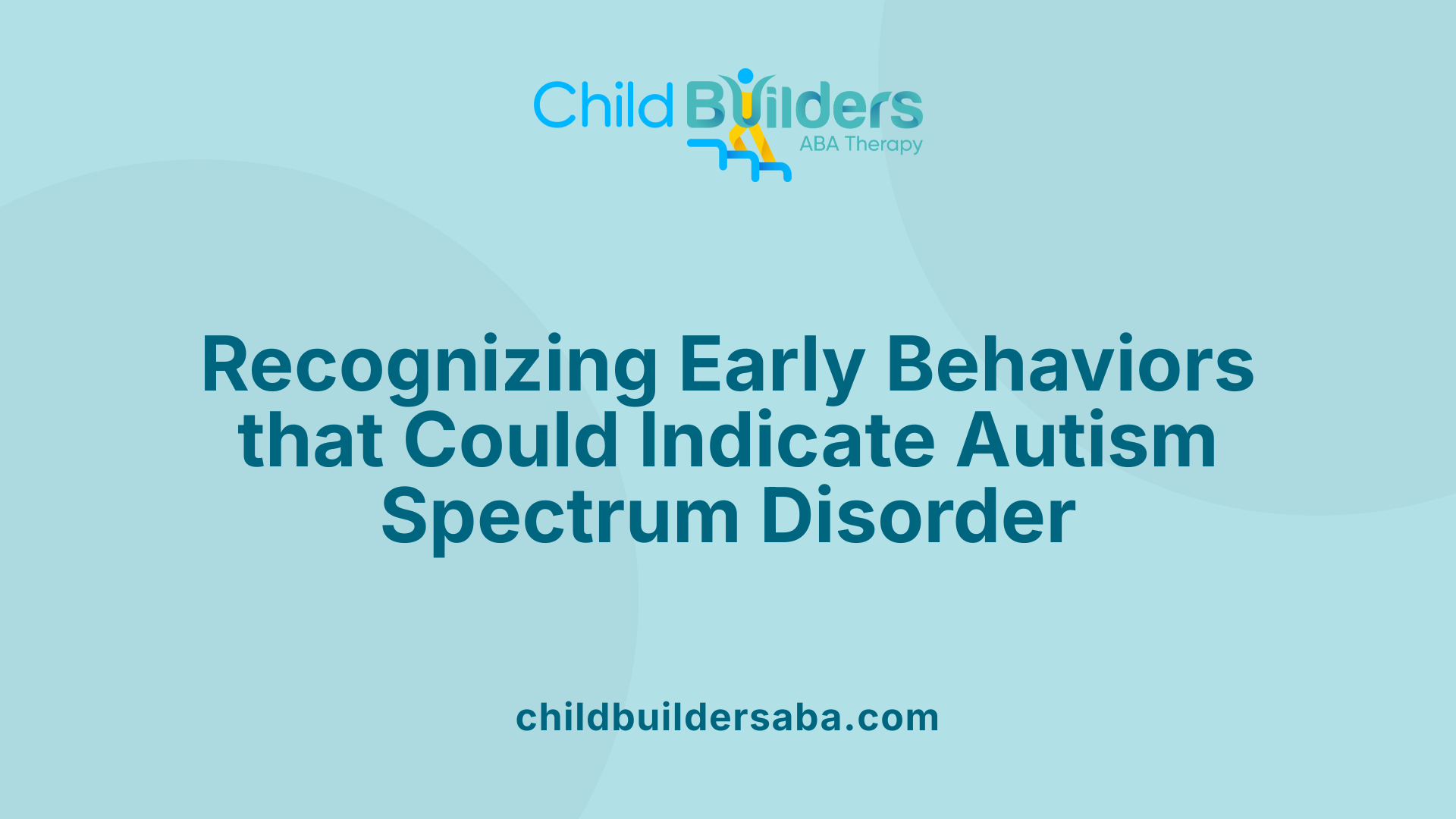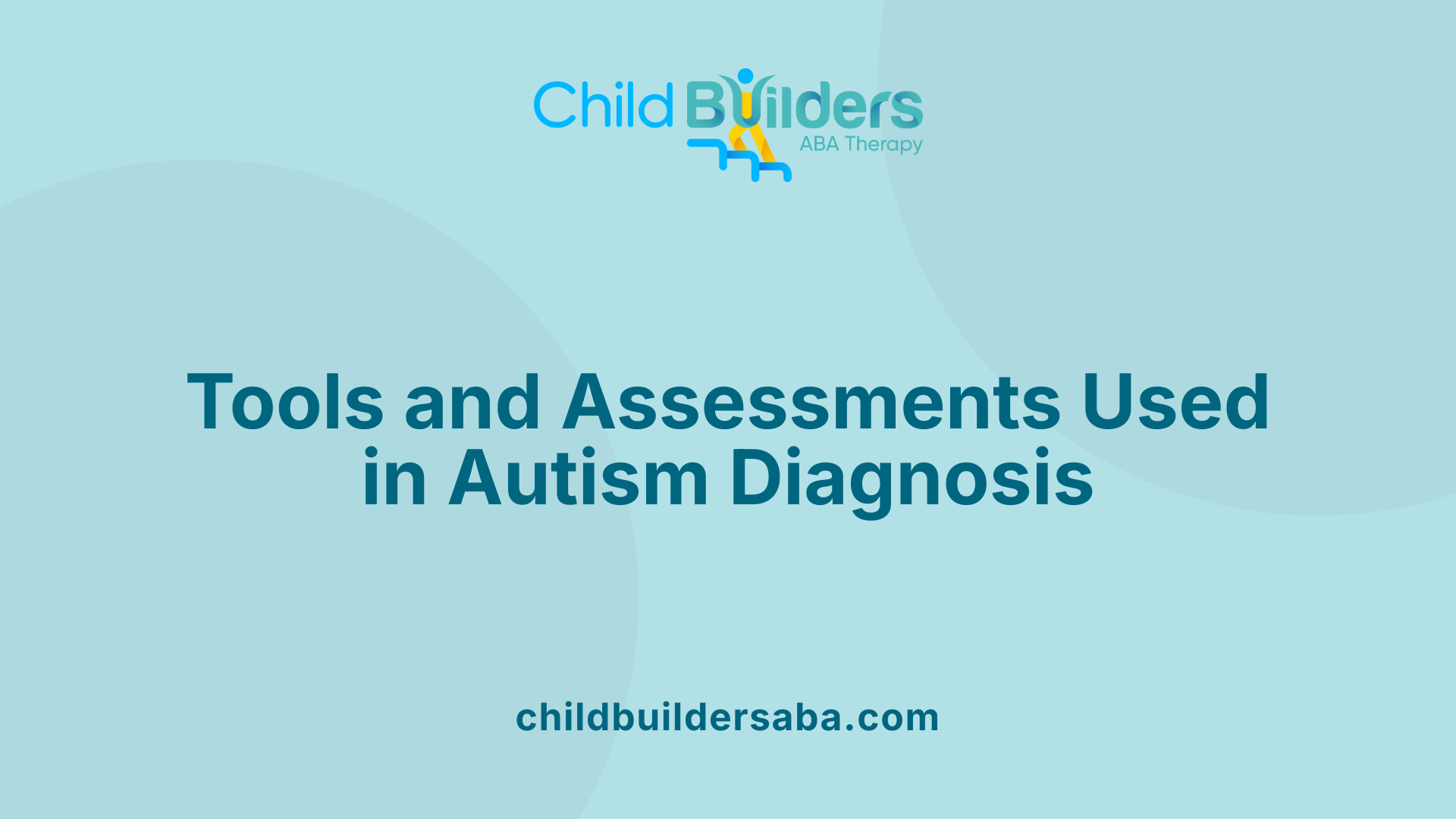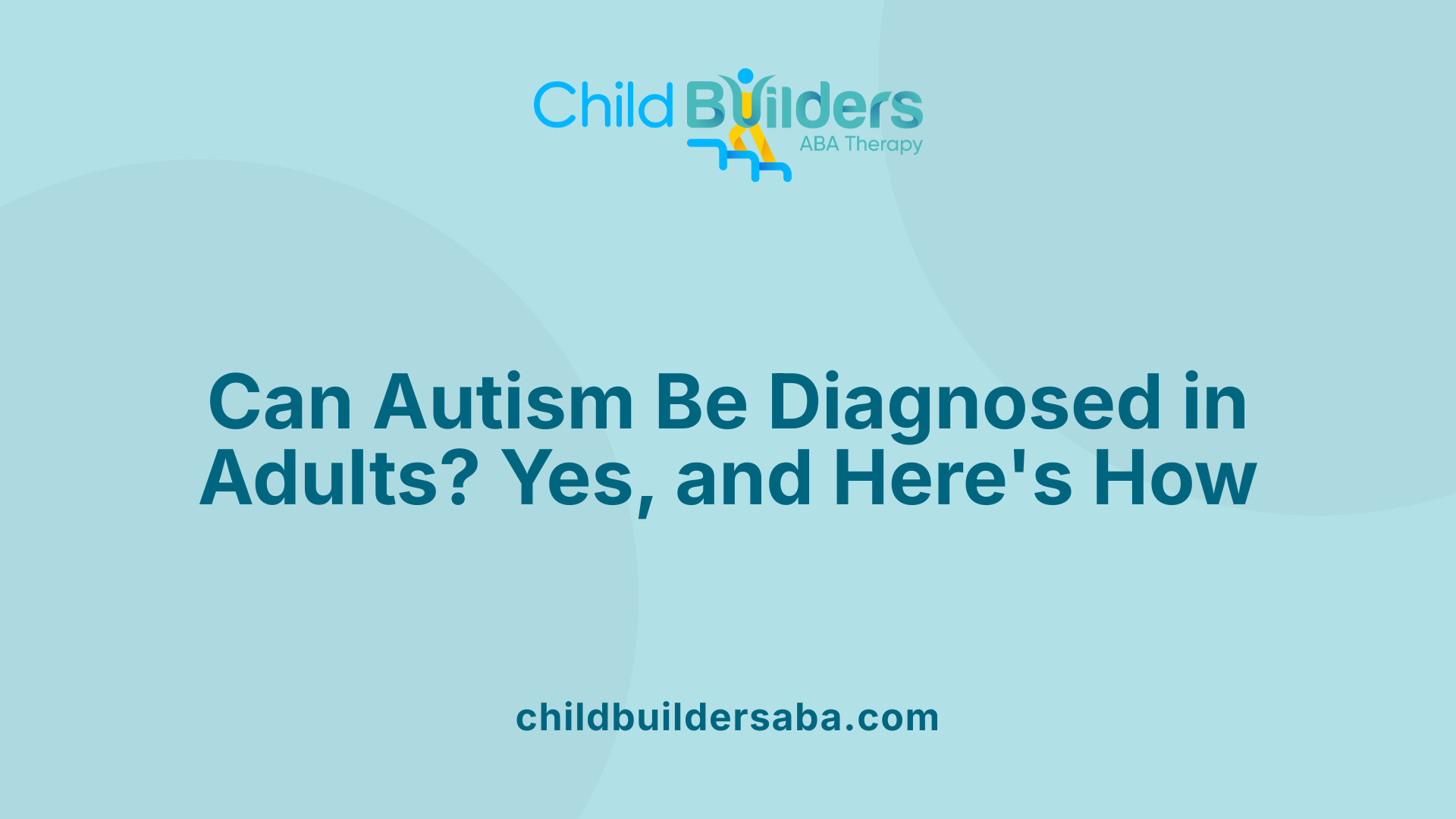When Is Autism Diagnosed?

When Is Autism Diagnosed? An Overview
Autism spectrum disorder (ASD) is a neurodevelopmental condition that begins before a child turns three, with signs often appearing within the first year of life. Early identification plays a critical role in ensuring that affected children receive timely interventions, which can significantly improve their developmental outcomes. This article explores when autism is typically diagnosed, the early signs to watch for, developmental milestones associated with autism, and the processes and challenges involved in diagnosis across different ages.
Early Signs and Developmental Indicators of Autism

What are the early signs of autism in infants and children?
Early signs of autism often appear within the first year of life, making them crucial for early detection. Parents and caregivers might notice that the infant rarely smiles when approached or engages minimally with others. A typical developmental milestone is responding to their name, which many children with autism do not do by 12 months.
Infants may exhibit limited or absent gestures like pointing, waving, or showing, which are important for social communication. Sound responses can also differ; some babies may react intensely or not at all to sounds or voices. Babbling and attempts at speech development, which typically begin around 6 to 12 months, may be delayed or absent.
As children grow, early behavioral signs include difficulties understanding others’ feelings or intentions, challenges with pretend or symbolic play, and repetitive behaviors such as hand-flapping or rocking. They may show resistance to changes in routines and display intense interests in specific objects or topics.
Recognizing these early signals is vital because it enables families to seek assessments promptly. Early intervention can significantly influence developmental outcomes, improving social skills and reducing behaviors associated with autism spectrum disorder (ASD). Vigilance in noticing these signs helps ensure children receive the support they need during their critical early developmental years.
What developmental milestones are associated with autism diagnosis?
Developmental milestones serve as benchmarks for typical growth in speech, social interaction, and play. In children with autism, many of these milestones are delayed or atypical.
Speech and language development often show signs of delay. For example, children who do not babble by 12 months or do not use gestures like pointing or waving by 12 months may be exhibiting early signs of autism. Similarly, having fewer words or none at all by 16-24 months, or not combining words into simple phrases by age 2, suggests possible concern.
Social interaction milestones also differ. Limited eye contact and not responding to their name are common early indicators. A lack of joint attention—looking back and forth between an object and a caregiver or not sharing interest through gestures—is also notable.
Play behaviors provide additional clues. Children with autism may prefer solitary or repetitive play and may not engage in pretend or symbolic play, such as feeding a doll or playing house. These behaviors contrast with typical development, where age-appropriate pretend play usually begins around 18-24 months.
Furthermore, early signs such as minimal smiling, showing little interest in social interactions, and resistance to changes in daily routines can help clinicians identify children who may need further evaluation.
Recognizing deviations from these milestones allows for early screening, essential for accessing interventions that can optimize developmental trajectories.
Early behaviors indicating ASD
Some behaviors evident in early childhood strongly suggest ASD. These include:
- Limited or no eye contact: Children may avoid looking at faces or making visual connection.
- Delayed or absent babbling and speech: Failure to develop typical language patterns raises concern.
- Lack of response to social cues: Not responding to their name or other social gestures.
- Atypical responses to stimuli: Unusual reactions to sounds, sights, or touch.
- Repetitive movements: Hand-flapping, spinning, or rocking are examples.
- Difficulty with imitation and pretend play: Struggling to mimic actions or engage in imaginative games.
- Preference for routines and resistance to change: Feeling distressed when routines are altered.
- Fascination with objects or intense focus: Fixation on specific items or topics.
Early identification of these behaviors, especially in combination, supports timely diagnosis and intervention. Healthcare providers may employ screening tools like the Modified Checklist for Autism in Toddlers (M-CHAT) and conduct developmental assessments to confirm concerns.
In sum, monitoring for these signs from infancy through toddlerhood can lead to earlier support, which is linked with improved language, social, and behavioral outcomes for children on the autism spectrum.
Typical Age of Autism Diagnosis and Early Detection
When is autism typically diagnosed?
Autism is most often diagnosed during early childhood, usually between the ages of 2 and 4 years old. However, signs of autism can sometimes be observed much earlier, sometimes as young as 12 months. Common early indicators include limited eye contact, a lack of response to their name, and delays in babbling or gesturing. Routine developmental screenings are recommended at specific ages—particularly at 18 and 24 months—which help identify children who may need further evaluation.
The reliability of diagnosis improves with age; by age 2, a diagnosis made by an experienced professional can be considered dependable. The first signs often lead parents and doctors to seek assessments that can confirm autism, which enables early intervention. Early diagnosis is crucial because it opens the door to therapies that can significantly improve social, communication, and behavioral skills, positively impacting long-term outcomes.
The Diagnostic Process and Criteria for Autism

What is the process and criteria for autism diagnosis?
Diagnosing autism involves a careful and detailed evaluation conducted by trained specialists, such as developmental pediatricians, psychologists, or neurologists. The process starts with gathering extensive developmental history from parents or caregivers, including milestones, behaviors, and any concerns observed over time.
The child’s behavior is then observed directly, often through structured assessments that evaluate social interaction, communication skills, and behaviors. To support the diagnosis, clinicians utilize standardized tools like the Autism Diagnostic Observation Schedule (ADOS) and the Autism Diagnostic Interview-Revised (ADI-R). These assessments help in systematically identifying autism-related characteristics.
The formal criteria for ASD diagnosis are based on the DSM-5 guidelines. They require persistent deficits in social communication and social interaction across various contexts, along with restricted, repetitive patterns of behavior, activities, or interests. These symptoms must be present from early childhood, although they might not fully manifest until social demands increase. Importantly, there is no medical test, like blood work, that can confirm autism. Instead, diagnosis relies on behavioral and developmental observations, supplemented by assessments that consider co-occurring conditions and the level of support required. This comprehensive process ensures accuracy and appropriateness of the diagnosis.
What screening and assessment tools are used for autism?
Routine screening tools are used during well-child visits to identify potential signs of autism at an early stage. The Modified Checklist for Autism in Toddlers, Revised (M-CHAT-R/F), is one of the most common tools, especially for children between 16 and 30 months. Other screening instruments like the Social Communication Questionnaire (SCQ) and the Parent’s Evaluation of Developmental Status (PEDS) help in noting early developmental concerns.
If screening results suggest risk, a more detailed developmental assessment is recommended. These involve structured observations and standardized assessments such as the ADOS, which evaluates how children communicate, play, and behave during interaction. The ADI-R provides an in-depth interview with parents about their child’s developmental history.
Since no single tool can definitively diagnose autism, professionals combine information from various assessments, clinical observations, and developmental histories. The overall diagnosis depends on evaluating whether the child’s behaviors align with autism spectrum disorder criteria, considering the severity and support needs. This layered approach ensures that every child receives an accurate diagnosis and appropriate support.
| Tool Type | Purpose | Age Range | Additional Details |
|---|---|---|---|
| M-CHAT-R/F | Autism risk screening | 16-30 months | Completed by parents with clinician follow-up |
| SCQ | Social communication concerns | Varies, often used from age 4+ | Parent-report questionnaire |
| PEDS | Developmental observations | From infancy through preschool | Focuses on various developmental domains |
| ADOS | Diagnostic observation | 12 months and older | Conducted by trained professional |
| ADI-R | Diagnostic interview | Usually for children age 2+ | In-depth parental interview |
This variety of tools and guidelines helps ensure that autism is diagnosed accurately and early, enabling timely intervention that can significantly improve developmental outcomes.
Stages and Timeline of Autism Diagnosis

What is the timeline and stages involved in diagnosing autism?
The process of diagnosing autism typically begins during early childhood, often between 12 to 24 months, with initial screening and concerns. Healthcare providers recommend developmental screening at routine well-child visits at around 18 and 24 months. These screenings, using tools like the Modified Checklist for Autism in Toddlers (M-CHAT-R) or the Ages and Stages Questionnaire (ASQ), serve as an early warning system to identify children at risk.
If a screening indicates possible developmental delays or signs of autism, the next step involves comprehensive evaluations. These assessments are carried out by specialists such as developmental pediatricians, child neurologists, psychologists, or speech-language pathologists. They include behavioral observations, questionnaires, and structured assessments like the Autism Diagnostic Observation Schedule (ADOS). During these evaluations, medical history, communication skills, social behavior, and developmental milestones are thoroughly reviewed.
This assessment process often extends over several appointments, sometimes spanning into preschool years. As children grow, additional evaluations might be necessary to clarify diagnoses, especially in cases where symptoms are subtle or co-occurring conditions are present.
Once enough information is amassed, a team of specialists determines whether the criteria for ASD in the DSM-5 are met. If diagnosed, the team discusses support options, intervention strategies, and educational planning with parents or caregivers.
The entire diagnosis timeline can vary widely based on individual circumstances, availability of resources, and the child's developmental profile. Typically, it can take from a few months up to over a year from initial screening to formal diagnosis.
Can autism be diagnosed in adults, and how?
Yes, autism can be diagnosed in adults, although it is often more challenging due to masking behaviors, coping strategies, or misinterpretation of social difficulties. Diagnosing adults involves a detailed review of developmental and developmental history, current behavior, and social communication skills.
Clinicians rely on standardized tools like the Autism Diagnostic Observation Schedule (ADOS-2) and the Autism Diagnostic Interview-Revised (ADI-R). They gather comprehensive information from the individual and often from family members or close contacts who can provide insights into childhood behaviors, social difficulties, and sensory sensitivities.
Adult diagnosis can be especially meaningful for those who have experienced lifelong social challenges, difficulties in understanding social cues, or have recognized patterns of repetitive behaviors. It provides clarity, access to support services, and self-understanding.
While assessments for adults may be more complex due to masking or adaptive behaviors, a proper evaluation can lead to a definitive diagnosis. Recognizing autism across the lifespan emphasizes its pervasive nature and the importance of ongoing support and understanding.
Challenges and Barriers in Diagnosing Autism
What challenges and delays are common in diagnosing autism?
Diagnosing autism spectrum disorder (ASD) can be a complex process riddled with delays and obstacles. One of the primary challenges is the wide variability of symptoms among individuals. This diversity makes it difficult for clinicians to identify autism consistently, especially when symptoms overlap with other developmental conditions such as ADHD, language delays, or intellectual disabilities. These overlapping features can mask or mimic ASD, leading to misdiagnoses or postponed recognition.
Screening tools like the Modified Checklist for Autism in Toddlers (M-CHAT-R) and developmental assessments provide valuable insights but have limitations. Relying heavily on specialized assessments such as the Autism Diagnostic Observation Schedule (ADOS) can introduce wait times and accessibility issues, particularly in underserved or rural areas. These delays can hinder early diagnosis, which is critical for initiating effective interventions.
Another significant factor is gender differences in symptom presentation. Girls with autism often mask their traits more effectively than boys, leading to underdiagnosis or late diagnosis. Cultural norms and societal expectations further influence the recognition of autism signs, impacting timely identification.
Socio-economic status also plays a role. Families facing financial challenges or lacking access to healthcare are less likely to pursue early screening and evaluation. This systemic barrier results in many children being diagnosed later than the optimal window, often after starting school.
Moreover, shortage of trained professionals and limited awareness about early signs of autism contribute to diagnostic delays. These systemic and societal issues create a cycle where children miss out on early intervention opportunities, which are crucial for improving long-term developmental outcomes.
Overall, these challenges collectively hinder the early identification of autism, emphasizing the need for improved screening practices, increased awareness, and better access to diagnostic resources to ensure timely intervention for all children.
| Aspect | Challenges | Impacts |
|---|---|---|
| Symptom Variability | Wide range of behaviors, overlap with other conditions | Difficult to standardize diagnosis, risk of misdiagnosis |
| Screening & Assessment Tools | Limitations of current tools like M-CHAT-R, reliance on specialists | Wait times, access disparities, delayed diagnosis |
| Gender Differences | Girls mask symptoms, social expectations | Lower diagnosis rates in girls, later recognition |
| Socio-economic Factors | Financial and geographical barriers | Delayed screening and assessment |
| Professional Shortage | Lack of trained clinicians | Increased wait times, missed early signs |
| Cultural & Societal Norms | Misinterpretation of behaviors, stigma | Underdiagnosis or late diagnosis |
Addressing these barriers involves expanding screening outreach, increasing healthcare resources, training providers, and raising awareness among communities and caregivers. Early detection is essential for providing children with the best possible developmental support and improving their lifelong outcomes.
The Significance of Timely Autism Diagnosis
Diagnosing autism at the earliest possible age is vital for maximizing developmental outcomes and providing children with targeted interventions that can profoundly influence their future. Although signs may emerge early, formal diagnosis often occurs in the preschool years, with some children being diagnosed later due to various barriers. Advances in screening tools, increased awareness, and systematic evaluation protocols continue to improve the timing and accuracy of autism diagnosis. Recognizing the signs early, understanding the diagnostic process, and addressing challenges are essential steps toward ensuring that individuals with ASD receive the support they need during their critical developmental years and beyond.
References
- Signs of autism | Autism Speaks
- When do children usually show symptoms of autism? | NICHD
- Screening for Autism Spectrum Disorder - CDC
- "Could My Child Have Autism?" Ten Signs of Possible Autism ...
- How early can you — and should you — diagnose autism?
- Autism Spectrum Disorder (ASD) Symptoms & Causes
- Screening & Diagnosis | Autism Society
- Do you think your child may have autism? Learn when to seek an ...



.jpg)

































































































